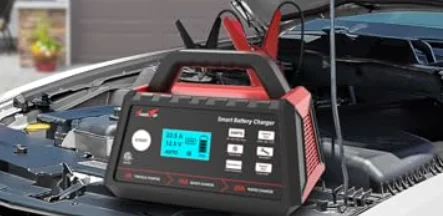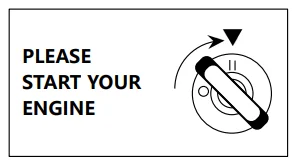
TowerTop BC0253-2 Smart Car Battery Charger

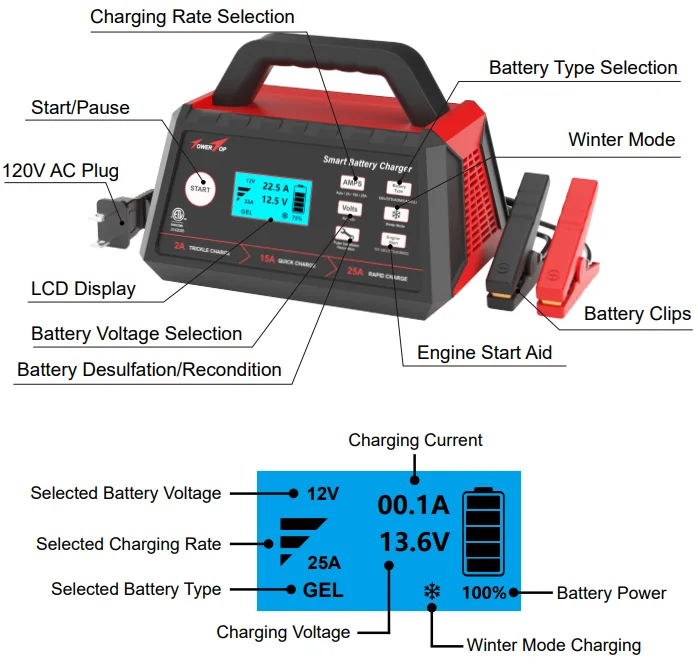
PACKAGE OVERVIEW
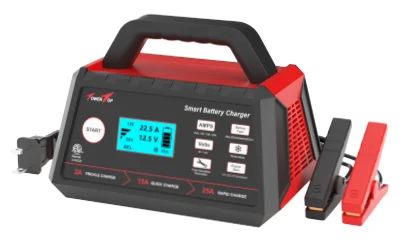
One TowerTop Smart Battery Charger with Battery Clips
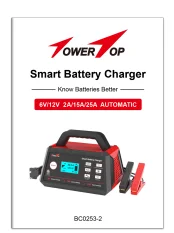
One Instruction Manual
MODE EXPLANATION
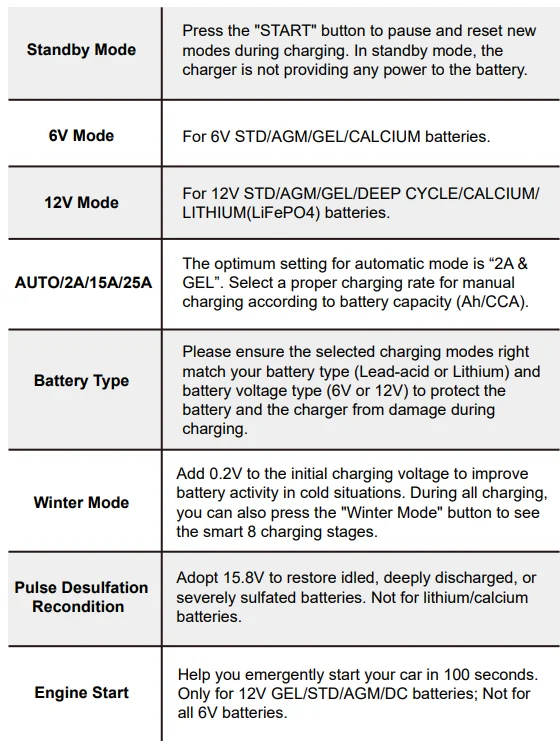
SPECIFICATIONS
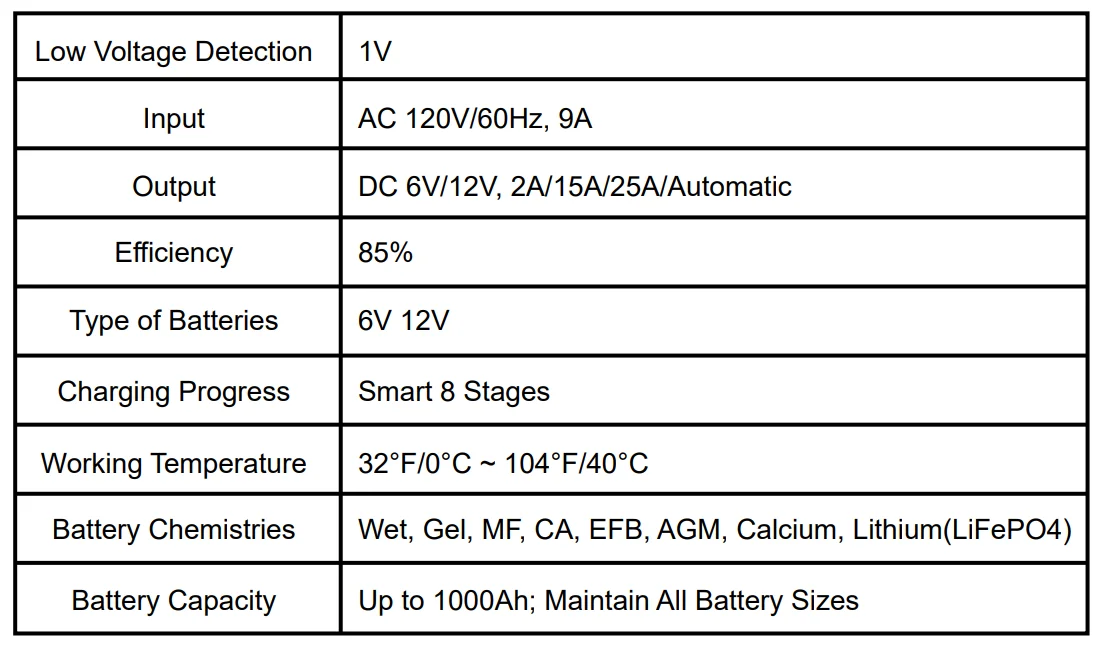
CHARGING TIMES
The size of the battery (Ah) and its depth of discharge (DOD) greatly affect its charging time. The estimated charging time shown below is based on an average discharge depth of 50% to a fully charged battery and is only for reference purposes. Actual data may differ due to battery conditions and temperature. The charger has “24H Overtime Charging Protection”.
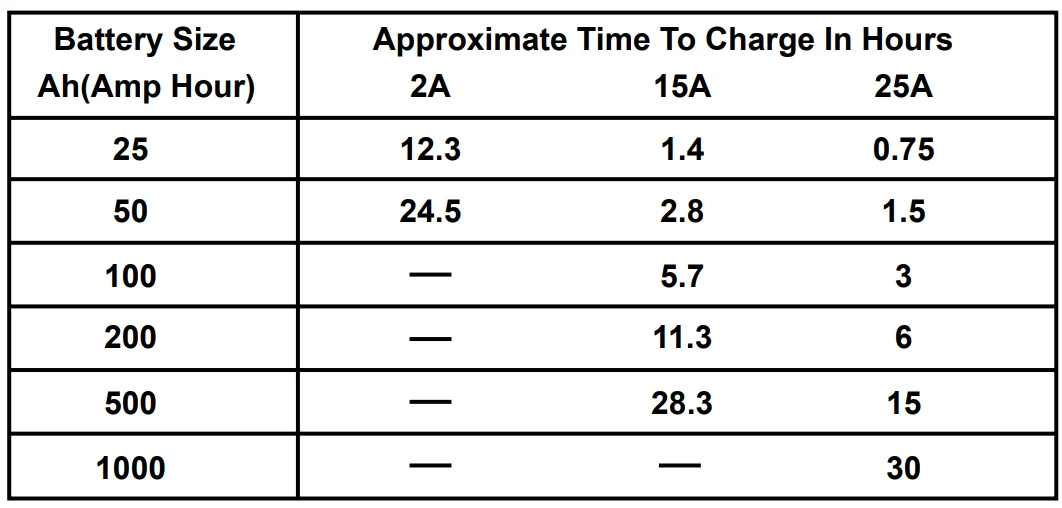
OPERATING INSTRUCTIONS
Automatic Charging
- Connect the battery clips to the battery terminals. Red clip to the positive terminal (+), and black clip to the negative terminal (-).
- Plug the battery charger into the 120V AC outlet. Without any manual selections, the smart charger will take about 30 seconds to automatically identify and charge your battery with the optimal settings (2A & GEL).
Manual Charging
- Connect the battery clips to the battery terminals. Red clip to the positive terminal (+), and black clip to the negative terminal (-). Plug the battery charger into the 120V AC outlet.
- Select your desired charging rate, compatible battery, and press the “START” button to start charging. All the data will be shown on the LCD screen.
- During the charging, you can press the “Winter Mode” button to check the smart 8 charging stages. It will automatically switch back to the main interface in 5 seconds.
- If you would like to reset the charger during the charging, first press the “START” button to pause charging, reset your desired modes, and then press the “START” button again to continue charging.
- The battery power percentage on the LCD will be 100% once your battery is fully charged. Then the charger will auto-stop charging in this case.
- Regarding a long-term connection and charging, the smart charger will auto-restart to pulse maintain the battery to 100% full again when it detects voltage. Auto-stop charging when it is 100% full again.
Two Selectable Charging Types For Lithium Batteries
Lithium Battery – Option One
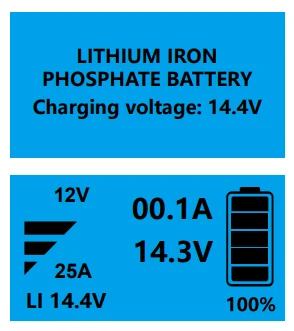
Lithium Battery – Option Two
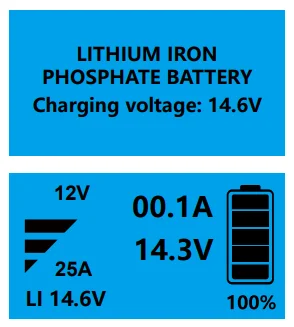
Smart 8-Stage Charging Program
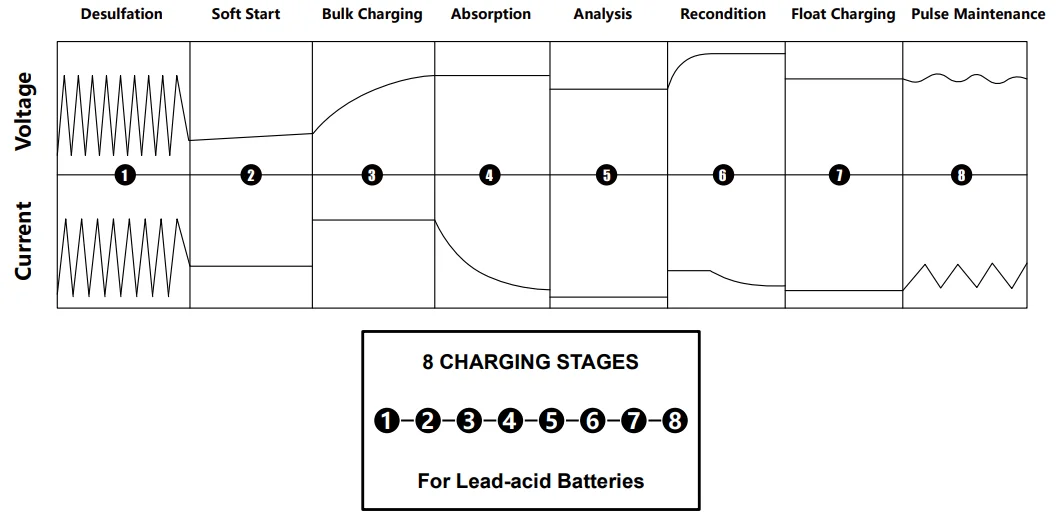
- Battery Desulfation – Adopt 15.8V pulse voltage for electrolytic removal of sulfated crystals. Automatically skip when not needed.
- Soft Start – A slow and steady buildup of the charging process that limits the power input to protect your battery.
- Bulk Charging – The main part of the whole charging process, where the battery power will reach about 80% full.
- Absorption – Fully charge the battery by slowly reducing the charging rate to allow your battery to absorb more power.
- Battery Analysis – Auto-test the battery state after charging. Abnormal – enter the repair stage; Normal – turn to the next stage.
- Battery Recondition – Restore over-discharged batteries. After repair, return to the “Bulk” stage. If it fails, an error will be reported.
- Float Charging – Keep battery at 100% without overcharging or damaging; Leave smart charger 24/7 plugged without worry.
- Pulse Maintenance – Auto-wake up and pulse compensate to 100% full again when the voltage drops, with a more durable battery.
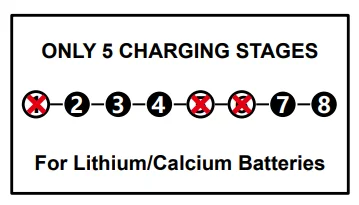
- Soft Start – A slow and steady buildup of the charging process that limits the power input to protect your battery.
- Bulk Charging – The main part of the whole charging process, where the battery power will reach about 80% full.
- Absorption – Fully charge the battery by slowly reducing the charging rate to allow your battery to absorb more power.
- Float Charging – Keep battery at 100% without overcharging or damaging; Leave smart charger 24/7 plugged without worry.
- Pulse Maintenance – Auto-wake up and pulse compensate to 100% full again when the voltage drops, with a more durable battery.
Winter Mode ChargingThe
TowerTop smart battery charger adds 0.2V more based on the initial charging voltage, better boosts your battery activity, and charges more thoroughly in low-temperature situations.

After connecting the battery charger to both your battery and the AC outlet, press the “AMPS” button to select your desired charging rate, press the “Battery Type” button to choose the compatible battery, then press the “Snowflake Symbol” to select winter mode charging, and press the “START” button to start charging. All the data will be shown on the LCD screen.
Battery Recondition (Not Applicable To Lithium/Calcium Batteries). The “Recondition” function is for recovering idled or unused batteries that are deeply discharged, thus helping the battery last longer. Battery repair time is up to 4 hours, and “Battery Failure” will be reported if it fails to repair in 4 hours.

With the repair completed, you can directly press the “START” button to start charging. Or you just wait for about 5 seconds, and the battery charger will automatically switch to the charging status.
Battery Desulfation (Not Applicable To Lithium/Calcium Batteries). The smart battery charger will identify and restore severely sulfated battery terminals to rehabilitate the lost performance. Battery desulfation time up to 24 hours, and “Battery Failure” will be reported if it fails after 24 hours. This mode will automatically skip and switch to the next stage if your battery does not need to be desulfated.d

With the desulfation completed, you can directly press the “START” button to start charging. Or you just wait for about 5 seconds, and the battery charger will automatically switch to the charging status.
Engine Start Aid (Only For 12V GEL/STD/AGM/DC Batteries) The Engine start aid helps in activating your car battery with insufficient power to start your vehicle in 100 seconds. You need to grasp the prompt in the picture below and start your car synchronously. If you miss this interface, you may not be able to start normally.

Operation Details:
- Select your battery type, press the “Engine Start” button, and the LCD screen will show, and then press the “START” button. The LCD screen shows as follows. It switches to the 100s-countdown interface. You need to wait.

- In the 60-second interface, it will immediately show the prompt picture below. Now you need to simultaneously start your car.

- If you fail to start your car for the first time, you need to wait for the 30S interface for a second attempt. Now you also need to seize the moment and simultaneously start your car.

- If you fail to start your car for the second time, you need to wait until the countdown is over and show the prompt picture again for a third attempt.

If you fail to start your car in the three attempts above, the LCLCDi will show as follows. This is the whole working cycle for the “Engine Start” function. In this case, if you still want to have a try again, press the “Engine Start” and “START” buttons again, then repeat the previous steps.

TROUBLESHOOTING


FOR MORE MANUALS BY TOWERTOP, VISIT MANUALSLIBRARYY
TowerTop BC0253-2 Smart Car Battery Charger-FAQs
How does a smart car battery charger work?
Smart chargers use automated multi-step processes to safely charge batteries and maximize their lifespan.
How long does it take to fully charge a car battery?
It usually takes 6–24 hours depending on the battery size and charger settings, with most batteries fully charged in about 10 hours.
How do I know if the charger is working?
Check the indicator lights: red usually means charging, green means fully charged. You can also monitor battery voltage for progress.
Can a smart charger overcharge my battery?
No. Smart chargers automatically switch to maintenance or pulse mode when the battery is full, preventing overcharging.
Can I leave the charger connected overnight?
Yes, if it is a smart charger with automatic shutoff and safety features. Avoid leaving standard chargers unattended.
Do I need to disconnect the car battery while charging?
Most smart chargers allow charging while connected, but always follow the manufacturer’s instructions for safety.
What voltage indicates a fully charged battery?
A healthy 12V battery should read around 12.6–12.8 volts when fully charged.
What do the red and green lights on the charger mean?
Red indicates charging, and green indicates the battery is fully charged or in maintenance mode.
What are signs of a bad car battery?
Symptoms include slow engine crank, dim lights, frequent jump-starts needed, and voltage dropping quickly after charge.

